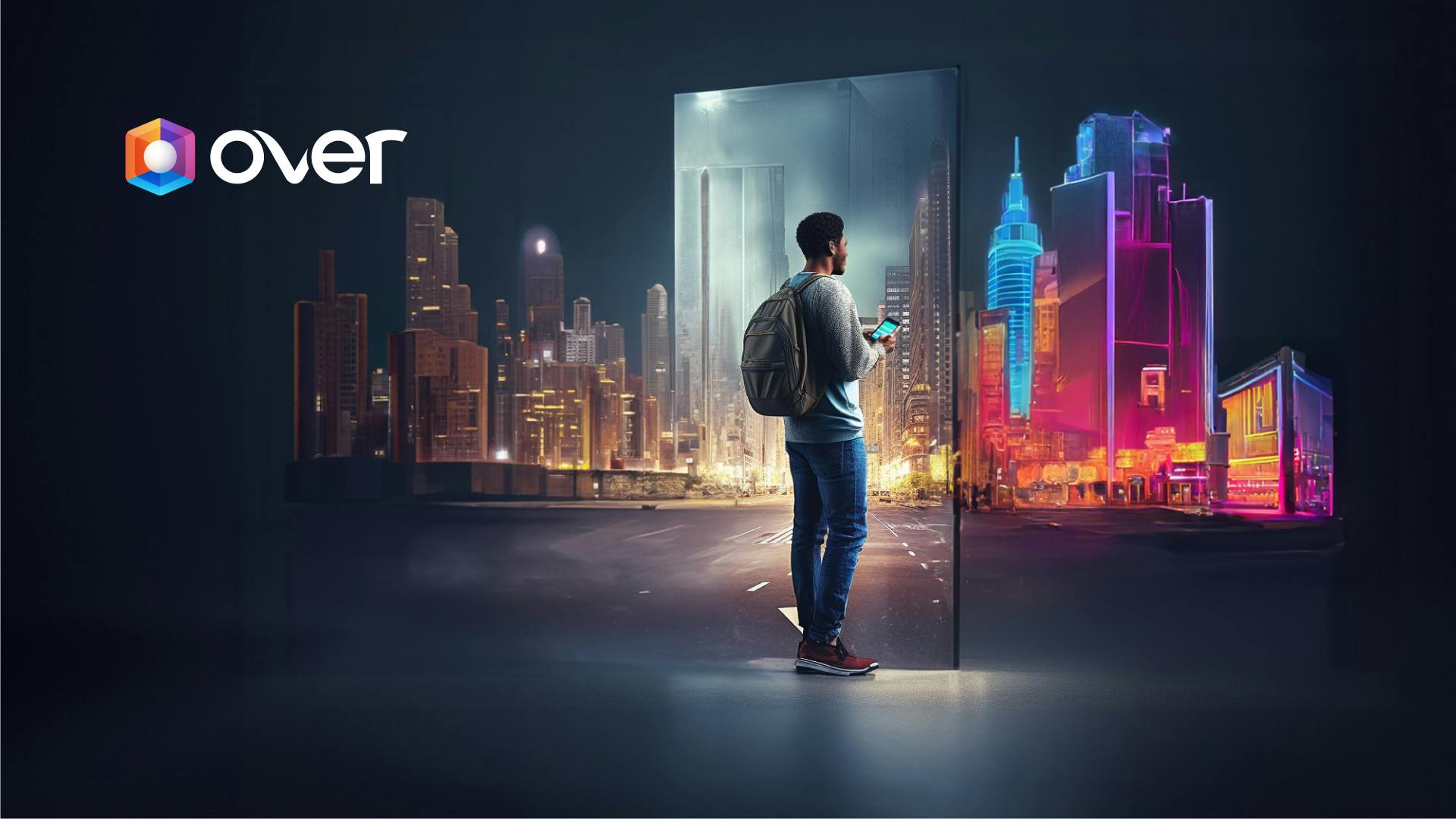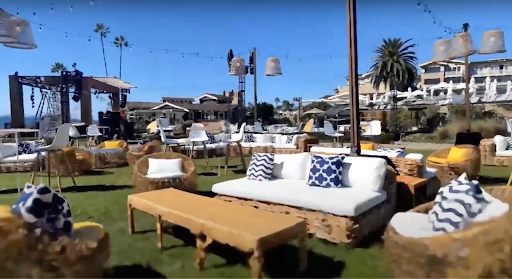
OVER’s patent application for real-time exploration of AI-generated 3D locations significantly advances the augmented reality ecosystem
2023-09-08
Created as part of the Mapper tool in the OVER app, the feature is a major addition to the development of AR and the spatial web. Co-founder and COO, Diego Di Tommaso explains.
In December of 2022, OVER released the beta version of its OVER Mapper tool.
A key feature of the OVER app, the OVER Mapper works by using the camera in smart devices to capture dozens of photos of a location. AI then pieces all of these individual images together to create a three-dimensional map.
With the location mapped in 3D, digital assets can be placed more precisely in the physical world for the creation of augmented reality scenes and experiences. This visual positioning system, or VPS, has far greater accuracy than GPS—as close as 20cm—and, unlike GPS, also works when mapping indoor spaces.
The 3D map can also be accessed remotely using the OVER app and an immersive fly-through video offers an unparalleled preview of this digital asset. This effectively means that anyone, anywhere can experience a location without having to actually be there.
The map also becomes the property of the person who mapped the location, and can be listed on the OVER Marketplace for purchase by other users.

IMAGE: Still from 3D digital map fly-through video of location in Laguna Beach, California, made using the OVER Mapper
“Our long-term vision at OVER is to create the largest Web3-based 3D recreation of the world. Think Google Maps but as AR-enabled digital twins that are not only made but owned by their creators.”
Google Maps alone generates one billion monthly visits. For the public to contribute to the creation of a global utility like this – and own it – is, we believe, an incredible opportunity.
The AR difference
In outlining the details of our patent pending proprietary system, it’s worth exploring the differences between augmented and virtual reality.
To date we’ve been able to draw a clear line between AR and VR experiences, with the first being a blend of digital assets and the physical world and the second being a totally enclosed virtual environment, detached from the physical world.
By making such distinctions we can also identify some clear strengths and weaknesses.
The main problem with VR is that it detaches you from the physical world. Of course, in many cases this is the desired outcome, however we need to remember that we’re physical beings and—at least for the moment—there’s only a limited amount of time we can spend in an alternative reality, closed off from the outside world.
With AR, the physical world is augmented with digital elements to create a blended experience.
Apple recently addressed this with the announcement of the Vision Pro headset in June, which tilts product design and UX towards AR, instead of VR.
“Vision Pro is a new kind of computer that augments reality by seamlessly blending the real world with the digital world. It’s the Apple product you look through and not at.” – Tim Cook, Apple CEO.
“When you first put on Vision Pro you see your space and everything in it.”
– Alan Dye, VP, Human Interface

IMAGE: Still from 3D digital map fly-through video of location in Laguna Beach, California, made using the OVER Mapper
Conversely, VR has a clear advantage over AR, the non-locality or accessibility: visiting or meeting in a virtual environment is effortless, while sharing an AR experience on location is currently impossible.
Imagine you create an amazing AR experience, a reconstruction of a gladiator fight inside the Colosseum, that can be experienced locally with AR. How do you share it with people who are not physically there?
With our new patent pending proprietary system, OVER has solved these problems.
Currently the only way to ‘experience’ the 3D map is via the fly-through preview video. The introduction of the patent pending proprietary system means that users can effectively move around and explore the scene using the OVER app.
This is significant, particularly when you consider that NeRF and Gaussian Splatting technology enable high resolution rendering of 3D locations, but to achieve real-time experiences, they need powerful GPUs.
The OVER patent pending proprietary system enables real-time exploration of mapped locations using common smartphones.
That reconstructed gladiator fight inside the Colosseum? It’s now possible.
You’ll be able to witness it and socialize with other spectators – both locally AND remotely – within the mapped stadium.
AR and VR are no longer separate realms. The OVER Map bridges the gap between the physical and the virtual, whilst retaining the strengths of both AR and VR.
A new frontier for creators and brands
Fashion brands and retailers are already making use of AR to create engaging experiences for their customers. Much of the press has focused on in-store ‘try-on’ activations, as well as AR showcases in the physical world.
For its part, in March of this year, OVER collaborated with a number of new and established fashion brands, such as Pinko, Space Runners x Balmain, Pet Liger, Ecoolska, and XR Couture to create a virtual fashion show in the center of Milan.
“With our new patent pending proprietary system, brands could bring the retail experience to their customers. Wherever they are.”
3D maps of stores are not only accessible but can be explored, with products placed in the space for purchase. Add AI-powered avatars into the mix and you have dedicated staff on hand to serve visitors with full knowledge of their buying history and preference, measurements and more.
It all adds up to the arrival of a powerful tool that companies can leverage to significantly extend their reach.
Map the world in 3D
To put the new feature through its paces and reach our goal of creating the largest Web3-based 3D recreation of the world, OVER will soon launch a major global push.
The ‘OVER Mapper – Map the World in 3D’ campaign will reward users for mapping specific locations around the globe. The incentivization program is an evolution of the Play2Earn and Learn2Earn models, which we call ‘Map2Earn’.
It promises to be the largest user-generated mapping initiative ever seen.
I look forward to telling you more about this in the coming months. In the meantime, stay tuned to our social channels for more information.
Read Beincrypto’s coverage of the patent submission.
